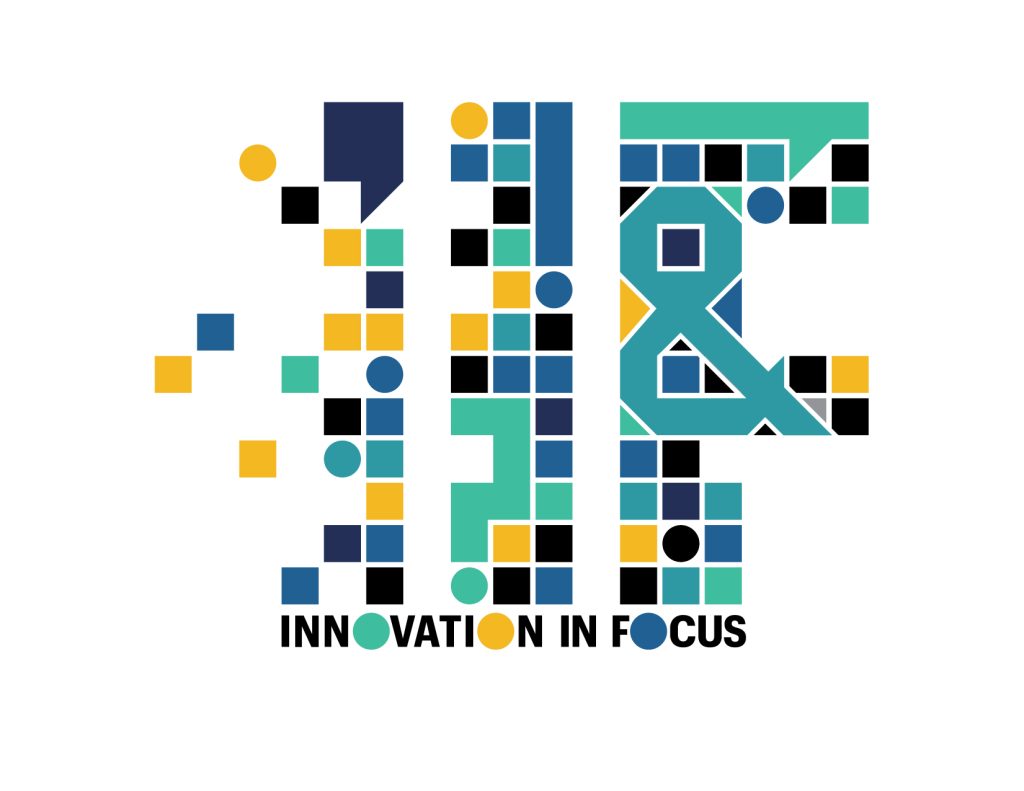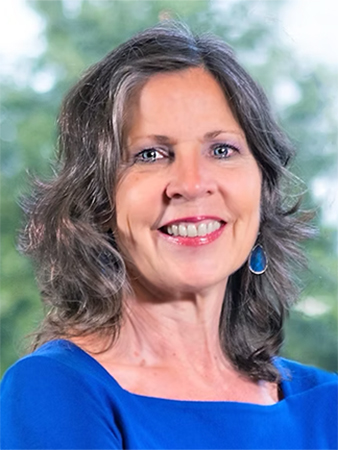Radar Clima es el boletín en español de Covering Climate Now. Cada dos semanas repasamos un tema clave para periodistas -especialistas o generalistas- desde la conexión climática y la lente de los tres pilares del periodismo climático: Humanizar, Localizar y Solucionar.
No olvides hacer la conexión climática en tus historias y basarla en la ciencia. Conectar los hechos con el cambio climático permite explicar las causas, responsabilidades y soluciones, y ayuda a tu audiencia a entender por qué es importante.
Si has recibido este email de un o una colega y quieres suscribirte, o si quieres ver nuestros boletines en inglés, haz clic aquí. Puedes ver ediciones anteriores de Radar Clima aquí.
¡Llegó nuestra edición especial de fin de año! Te proponemos un juego para reconocer los mitos climáticos más comunes que hemos escuchado y aprender a responder con datos. Descárgate nuestra tarjeta de bingo y úsala para marcarlos. Esta guía con respuestas te ayudará a desarmar al próximo negacionista que te cruces en las fiestas.

El clima siempre ha cambiado
Sí, pero nunca tan rápido. Los cambios que antes tardaban miles de años ahora ocurren en décadas, y es por el CO2 humano.
El calentamiento global observado desde la Revolución Industrial, hacia 1850, sólo puede explicarse por el exceso de CO2 en la atmósfera, y ese exceso proviene de actividades humanas. Lo sabemos por varias huellas: el CO2 atrapa calor en la parte baja de la atmósfera mientras enfría la estratosfera; los inviernos se están calentando más que los veranos, tal y como se predijo hace más de un siglo; y los estudios científicos muestran que ninguna combinación de causas naturales puede explicar el calentamiento reciente sin incluir los gases de efecto invernadero emitidos por los humanos.
También sabemos que el CO2 extra viene de nosotros porque las emisiones humanas superan lo que la naturaleza puede absorber, los océanos se están acidificando y la composición atómica del CO2 atmosférico coincide con la de los combustibles fósiles.
La idea de que el cambio climático actual “es natural porque antes también lo fue” es una falacia: que un fenómeno tenga causas naturales en el pasado no significa que ahora no pueda tener una causa distinta. Ninguno de los mecanismos que provocaron cambios climáticos en el pasado puede explicar el rápido aumento de CO2 y de temperatura observado en los últimos 150 años. En cambio, el CO2 emitido por los seres humanos sí explica ambos.
No hay consenso científico
¡Falso! Más del 99% de la investigación científica coincide en que la actividad humana está calentando el planeta.
El consenso en cambio climático no es algo de hace dos días; lleva cuatro décadas establecido. El consenso científico ocurre cuando la gran mayoría de especialistas coinciden en una explicación básica después de años de investigación. Así como casi todos los biólogos, astrónomos o médicos coinciden en principios fundamentales en sus campos, los científicos del clima han seguido el mismo camino: observan, investigan y formulan hipótesis que luego ponen a prueba hasta que la evidencia es tan sólida que las discusiones básicas se resuelven.
Los estudios de consenso climático revisados por pares (científicos del mismo campo) y las opiniones de expertos muestran consistentemente un consenso del 97-98% de que la actividad humana está sobrecalentando el planeta. Estudios más recientes cifran el consenso en “más del 99%”. Al revisar estas encuestas, se aprecia que cuanto mayor es el conocimiento sobre clima de los científicos encuestados, mayor es el consenso sobre el calentamiento global causado por la actividad humana.
El científico climático Michael E. Mann equipara este nivel de acuerdo a otros consensos científicos aceptados de forma universal: “Hay el mismo consenso científico sobre el cambio climático causado por los humanos que sobre la gravedad”.
¿Qué calentamiento? Hace mucho frío
Hay que diferenciar entre el tiempo de hoy y el clima global a largo plazo. En la última década los récords de calor duplican a los de frío.
Un día frío local no tiene nada que ver con el aumento global de las temperaturas. Como dice el científico climático Adam Levy, sería como quejarse de ser bajito en un mundo donde la gente es cada vez más alta. Antes que nada, hay que diferenciar entre el tiempo meteorológico y el clima (la NOAA lo explica en este video en español), aunque en muchos países de Latinoamérica se usa la palabra clima para referirse a ambos y esto añade una capa más de confusión.
Desde mediados de los años setenta, la temperatura global ha ido aumentando unos 0,2C por década. Aunque el calentamiento global causado por los humanos comenzó con la Revolución Industrial, el aumento más rápido y claramente detectable en los registros modernos empieza en los años setenta, cuando las emisiones crecieron con fuerza y la influencia de los aerosoles contaminantes -que antes ocultaban parte del calentamiento- comenzó a disminuir.
Aun así, el tiempo meteorológico tiene altibajos marcados, por lo que siguen apareciendo días muy fríos incluso en un planeta que se calienta. Es normal que la gente recuerde estos fenómenos extremos, como las olas de frío o de calor, más fácilmente que las tendencias a largo plazo. En la última década, los récords diarios de calor han ocurrido el doble de veces que los récords de frío.
Es el efecto isla de calor urbano
Falso. El calentamiento se observa por igual en las ciudades y en el campo, en la superficie y con satélites.
Este fenómeno se refiere a que las zonas más densamente construidas de una ciudad suelen registrar temperaturas ligeramente más altas, debido a la concentración de actividad humana y a infraestructuras que acumulan y liberan calor. Pero la tendencia de calentamiento es igual tanto en las zonas rurales como urbanas. Se observa por igual en termómetros en superficie, en mediciones de satélites y en los indicadores naturales del clima.
Muchos argumentos negacionistas intentan explotar este tipo de fenómenos para sembrar confusión. Un ejemplo fue un proyecto online en Estados Unidos en el que los participantes fotografiaban estaciones meteorológicas para decir que estaban mal ubicadas y, por lo tanto, desacreditar los datos de temperatura. Su lógica era que, si cuestionaban algunos registros en Estados Unidos, podrían afirmar que el calentamiento global era un engaño. Pero ignoraban todo lo demás: la pérdida de hielo marino, el aumento del nivel del mar, el desplazamiento de algunas especies o el retroceso de glaciares.
Sin embargo, los científicos ya conocen las posibles anomalías en los datos. Por ejemplo, la NASA corrige el efecto de “isla de calor urbano” comparando tendencias en ciudades con las zonas rurales cercanas para obtener registros más precisos. A veces, incluso se ha visto que hay estaciones urbanas que son más frías porque se han instalado en parques. Además, estudios independientes como Berkeley Earth (dirigido por un científico que en ese momento era escéptico) llegaron a los mismos resultados que la NASA: la tendencia global de calentamiento es real y consistente.
La agenda climática es de extrema izquierda
Falso. Combatir el cambio climático es gestión de riesgos y economía, y en su enorme mayoría se basa en mecanismos de mercado, no en planificación centralizada.
Es falso que la llamada “agenda climática” sea un tema sólo de la izquierda. En primer lugar, una enorme mayoría global, entre el 80 y el 89% de las personas en el mundo apoya que sus gobiernos impulsen medidas más ambiciosas contra el cambio climático, independientemente de ideologías políticas.
No se trata de transformar la economía en un sistema estatizado. Las políticas climáticas en todo el mundo, desde el ahorro que suponen las renovables en la Unión Europea hasta los incentivos de innovación limpia en Canadá o Corea del Sur se basan en mecanismos de mercado, competencia, emprendimiento, inversión privada y regulación, no en planificación centralizada. La transición energética global está siendo impulsada por empresas, consumidores, ciudades y gobiernos de todos los signos ideológicos, no por un modelo económico único.
Plantearla como “agenda de extrema izquierda” es una distorsión política que no refleja la realidad. Combatir el cambio climático es gestionar riesgos, proteger a las economías y modernizar sectores económicos para hacerlos más competitivos ante los cambios que ya estamos sufriendo.
El IPCC es alarmista
El IPCC sólo evalúa la ciencia publicada. Muchos científicos creen, de hecho, que es un organismo demasiado conservador.
El IPCC es un organismo de la ONU creado en 1988 para evaluar y resumir la ciencia sobre el cambio climático y orientar a los gobiernos. No hace investigación original ni modelos propios: recopila estudios ya publicados y presenta cada 6-7 años un informe de evaluación. A pesar de las críticas de que es alarmista, su función es simplemente reflejar el estado de conocimiento científico, que muestra un calentamiento cada vez más preocupante. De hecho, muchos científicos sostienen que el IPCC suele ser demasiado conservador, especialmente en asuntos como el aumento del nivel del mar o el deshielo de grandes capas de hielo.
Las acusaciones de que exagera o que oculta estudios contrarios no tienen base: cualquier lector puede consultar las fuentes científicas que cita. Los modelos climáticos provienen de centros internacionales coordinados por el proyecto CMIP, no del IPCC. El panel también debe comunicar incertidumbres científicas de forma rigurosa, y esto a veces se malinterpreta o se usa para sembrar dudas. Aun así, los datos son claros: el CO2 ha alcanzado niveles vistos por última vez hace alrededor de 3 millones de años, y la ciencia advierte de impactos cada vez más graves si no se reducen rápidamente las emisiones.
Poner límites a las emisiones de CO2 dañará la economía
¡Al contrario! Los economistas coinciden: los costos de la inacción climática son mucho más altos que los de la transición energética.
Si no reducimos las emisiones, el cambio climático traerá costos económicos graves y más inestabilidad global, como ya está ocurriendo. La solución pasa por usar menos combustibles fósiles, ya sea reemplazándolos con energías renovables o reduciendo la demanda mediante mayor eficiencia. Estas medidas a menudo implican gravar, o retirar subvenciones, a combustibles fósiles y otros productos intensivos en carbono, lo que genera preocupación sobre posibles impactos económicos.
Sin embargo, existe consenso entre los economistas climáticos: poner un precio a las emisiones es necesario y rentable a largo plazo. Los escenarios científicos muestran que los países que reducen emisiones más rápido terminan con mejores resultados económicos que aquellos que siguen con altas emisiones, porque los costos de los daños climáticos superan ampliamente cualquier ahorro inicial. Los esquemas de precio al carbono, combinados con apoyo a energías limpias, son una herramienta eficaz para lograr esa transición sin perjudicar el crecimiento económico.
El cambio climático es un engaño político
Las leyes de la física no entienden de política. La evidencia científica es abrumadora y la confirman todas las instituciones globales.
A las leyes de la física no les importa la política, pero algunas veces encontramos a personas que afirman que el cambio climático es un engaño cuando ni siquiera están preparadas para argumentarlo. No lo están porque la evidencia científica es abrumadora: prácticamente cualquier institución científica en el planeta concluye que el cambio climático provocado por los humanos es un hecho. Por desgracia, esta evidencia a menudo no sirve para cambiar la opinión de los negacionistas.
Las teorías conspirativas han amplificado este problema: abundan en internet y redes sociales, donde distorsionan lo que dicen realmente la ciencia y siembran dudas infundadas sobre el calentamiento global. Y también son extendidas, en buena medida, por grupos con motivaciones políticas, económicas o ideológicas específicas como gobiernos, empresas o industrias.
Pero el clima no es patrimonio de una ideología. Hay conservadores que apoyan la resiliencia y la protección local; progresistas que impulsan la justicia ambiental, y gobiernos pragmáticos que ven en la transición energética una oportunidad económica.
A nadie le importa el cambio climático
Falso. Entre el 80 y el 89% de las personas en el mundo quieren acción climática, pero no saben que son la mayoría.
Lejos de ser un tema marginal, la realidad es que la gran mayoría del mundo es consciente del cambio climático, apoya medidas para enfrentarlo y quiere que sus gobiernos actúen.
Entre el 80 y el 89% de las personas en el mundo apoyan la acción climática y reconocen que es una amenaza seria, pero muchos no saben que forman parte de esa mayoría: creen, erróneamente, estar en minoría. Por ejemplo, aunque el 69% de la población está dispuesta a aportar el 1% de sus ingresos mensuales para enfrentar la crisis climática, la gente piensa que sólo el 43% de los demás lo haría. Ese desfase es lo que busca corregir el Proyecto 89% de Covering Climate Now, al que puedes unirte como periodista hasta la primavera de 2026.
A la gente le importa el cambio climático porque ya se cuela en su vida cotidiana: en las primas de seguros que suben por el aumento de las inundaciones e incendios; en la canasta de la compra que se encarece por olas de calor y sequías que afectan a la producción de alimentos; y en las facturas de electricidad que se disparan cuando fenómenos meteorológicos extremos dañan la infraestructura energética. No hace falta que alguien se identifique como ambientalista para preocuparse por estos impactos: basta con abrir el recibo del seguro, del súper o de la luz.
Los humanos, las plantas y los animales pueden adaptarse
La adaptación tiene un límite, y la velocidad de calentamiento actual es 100 veces superior a la que muchas especies y ecosistemas pueden soportar.
La capacidad de adaptación ha permitido a las especies sobrevivir durante millones de años, pero hoy ese límite se está alcanzando. El rápido aumento de las temperaturas y los cambios en los patrones de precipitaciones ya superan la velocidad a la que muchas plantas, animales y personas pueden ajustarse. Un informe de 2019 advirtió que un millón de especies animales y vegetales están en riesgo de extinción, debido al cambio climático y a la destrucción de hábitats.
A este ritmo acelerado se suma otro problema: el mundo natural ya está debilitado por siglos de deforestación, pérdida de hábitats, contaminación, especies invasoras y sobreexplotación. La evidencia muestra que estamos en tasas de pérdida de especies entre 100 y 1000 veces superiores a lo normal. Además, el calentamiento futuro puede hacer inhabitables regiones enteras del planeta debido a temperaturas y humedades extremas que el cuerpo humano no puede soportar. Aunque el panorama es preocupante, aún es posible evitar los peores escenarios si reducimos rápidamente las emisiones, protegemos la biodiversidad y aceleramos la transición hacia energías limpias.
Un aumento de 1.5C no es gran cosa
Es un problema enorme. Ese aumento ya ha duplicado el clima extremo, y cada fracción de grado adicional aumentará dramáticamente el riesgo.
El hecho es que es un gran problema. Las temperaturas globales actuales están aproximadamente 1,3 grados Celsius (2 grados Fahrenheit) por encima de los niveles preindustriales, e incluso hemos vivido años recientes que han rozado temporalmente 1,5 o 1,6 grados Celsius. Ese aumento ya ha intensificado el clima extremo que se observa en todo el mundo. Los impactos se intensificarán cuanto más suba la temperatura. Además, alrededor de 2ºC podrían activarse retroalimentaciones peligrosas, como el deshielo del permafrost que libera más gases de efecto invernadero, y no sabemos con certeza cómo responderá el clima porque las temperaturas nunca fueron tan altas en cientos de miles de años.
De hecho, con el actual aumento de temperatura, ya observamos impactos de gran intensidad y gravedad, como olas de calor sin precedentes, el blanqueo de los arrecifes de coral o la desaparición de glaciares.
Aunque tenemos las herramientas, actualmente no estamos en el camino de limitar el calentamiento a 1,5ºC, pero incluso si cruzamos ese umbral, cada fracción de grado se traducirá en impactos, por lo que cruzar ese umbral no significa que podamos bajar los brazos.
Es inevitable, ¿para qué molestarse?
No es inevitable. Ya tenemos las herramientas y tecnologías para evitar los peores impactos y cada acción reduce el daño futuro.
Los científicos ya han dicho repetidamente que la Humanidad ya cuenta con las herramientas y tecnologías para detener el cambio climático y evitar sus peores impactos. El Informe de Síntesis del IPCC clasifica los cinco enfoques clave que pueden limitar el aumento de la temperatura global a 1,5 ºC.
La Humanidad tendrá que convivir con las temperaturas más altas actuales durante muchos años, pero aún podemos limitar drásticamente los daños futuros si actuamos con firmeza ahora. Las soluciones climáticas son abundantes, de sentido común y, a menudo, económicamente superiores a las prácticas actuales. Muchos gobiernos y empresas ya están desarrollando soluciones de energía verde, transporte público, resiliencia costera y agricultura climáticamente inteligente. El Proyecto Drawdown también incluye una larga lista de soluciones específicas para reducir las emisiones.
El 7 de enero de 2026 Radar Clima vuelve para hablar de las historias que marcarán el nuevo año, como siempre con nuevas ideas, contactos de expertos y recursos para ayudarte en tu reporteo.
Support Covering Climate Now
The post Bingo climático navideño para tu pariente negacionista appeared first on Covering Climate Now.









